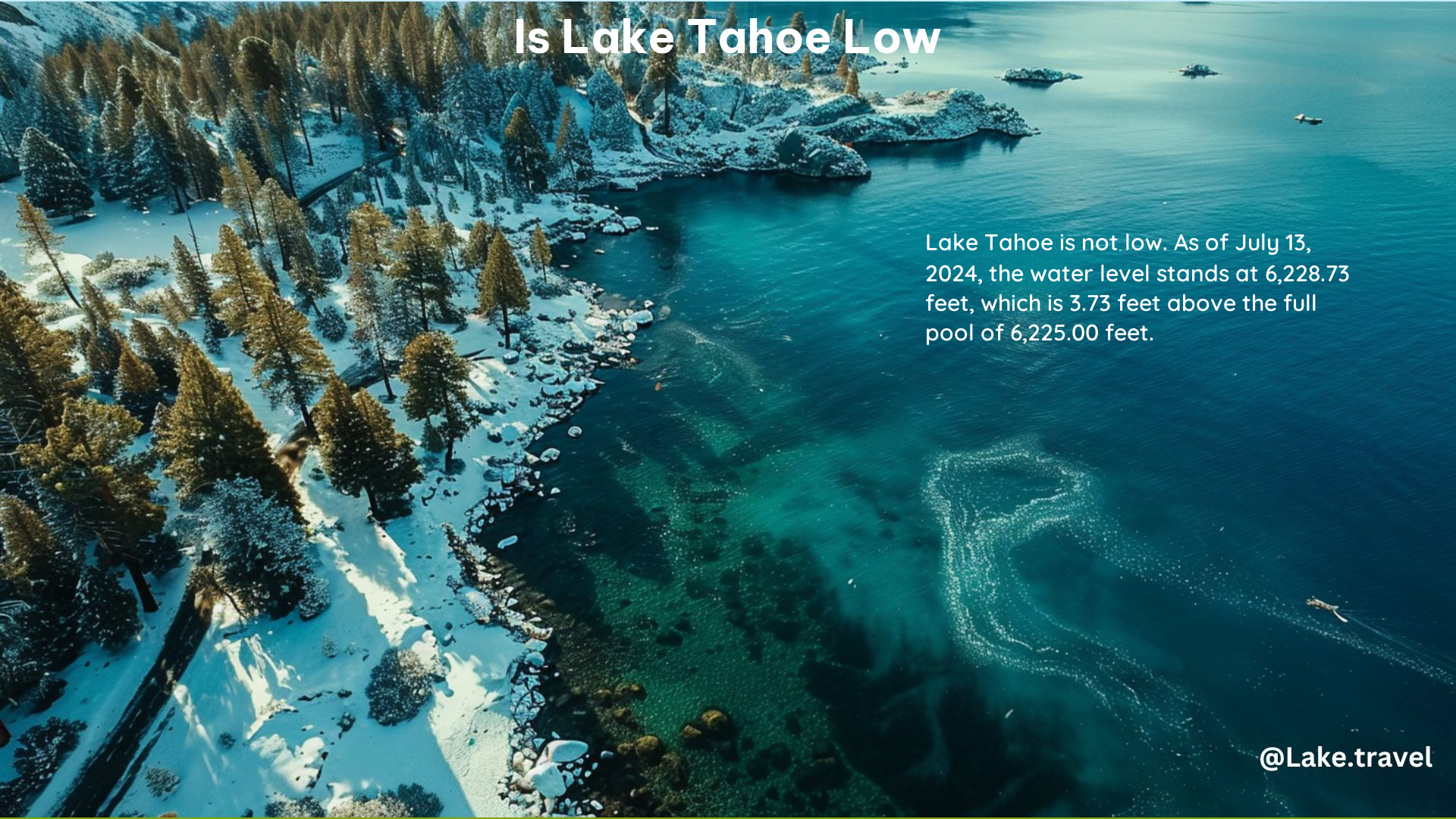As of July 13, 2024, the water level of Lake Tahoe is at 6,228.73 feet above sea level, which is 3.73 feet above the full pool level of 6,225.00 feet. This indicates that the lake is currently at a higher than usual level, likely due to the significant snowpack and precipitation in the region.
Understanding Lake Tahoe’s Water Levels
Lake Tahoe’s water level fluctuates throughout the year due to various factors, including evaporation, precipitation, and outflow via the Truckee River. The lake’s water master, Chad Blanchard, explains that evaporation accounts for about 55% of the total reservoir portion of the lake.
During drought years, the lake’s water level can drop, leading to concerns about its overall health. However, the current situation suggests that Lake Tahoe is in a healthy state, with the water level well above the full pool level.
Factors Affecting Lake Tahoe’s Water Levels

Several key factors influence the water level of Lake Tahoe:
-
Precipitation: The amount of snowfall and rainfall in the Lake Tahoe basin directly impacts the water level. Increased precipitation leads to higher water levels, while drought conditions can cause the lake to recede.
-
Evaporation: As mentioned earlier, evaporation accounts for a significant portion of the lake’s water loss. Factors such as temperature, wind, and humidity can affect the rate of evaporation.
-
Outflow: The Truckee River, which flows out of Lake Tahoe, plays a crucial role in regulating the lake’s water level. The amount of water released through the river can impact the overall water level.
-
Groundwater Interactions: The exchange of water between Lake Tahoe and the surrounding groundwater system can also influence the lake’s water level.
Recent Trends in Lake Tahoe’s Water Levels
In recent years, Lake Tahoe has experienced fluctuations in its water level. Here’s a closer look at the trends:
2023: Recovering from Drought Conditions
In 2023, the lake was still recovering from drought conditions, but by September 2023, the water level had risen to 6,227.8 feet, just shy of the maximum legal limit of 6,229.10 feet.
2024: Above Full Pool Level
As of July 13, 2024, the water level of Lake Tahoe is at 6,228.73 feet, which is 3.73 feet above the full pool level of 6,225.00 feet. This indicates that the lake is currently at a higher than usual level, likely due to the significant snowpack and precipitation in the region.
Importance of Monitoring Lake Tahoe’s Water Levels
Monitoring the water level of Lake Tahoe is crucial for several reasons:
-
Ecosystem Health: The lake’s water level directly impacts the health of the surrounding ecosystem, including the aquatic life and the overall water quality.
-
Recreational Activities: Lake Tahoe is a popular destination for various recreational activities, such as boating, swimming, and fishing. Maintaining a healthy water level is essential for these activities to thrive.
-
Water Supply: Lake Tahoe is a vital water source for the surrounding communities, and monitoring its water level helps ensure a reliable water supply.
-
Flood Control: Maintaining the lake’s water level within a specific range is important for flood control, as high water levels can lead to potential flooding in the surrounding areas.
Conclusion
In conclusion, the current water level of Lake Tahoe is not low, but rather above the full pool level. This indicates a healthy state for the lake, likely due to the significant snowpack and precipitation in the region. Monitoring and understanding the factors that influence Lake Tahoe’s water levels is crucial for maintaining the lake’s ecosystem, supporting recreational activities, and ensuring a reliable water supply for the surrounding communities.
Reference:
– Lake Tahoe Water Level Data
– Lake Tahoe Water Management
– Lake Tahoe Ecosystem Health
